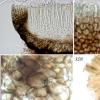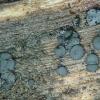
15-12-2025 15:48
 Danny Newman
Danny Newman
Melanospora cf. lagenaria on old, rotting, fallen

15-12-2025 15:54
 Johan Boonefaes
Johan Boonefaes
Unknown anamorph found on the ground in coastal sa

15-12-2025 21:11
 Hardware Tony
Hardware Tony
Small clavate hairs, negative croziers and IKI bb

15-12-2025 07:09
 Danny Newman
Danny Newman
indet. Rutstroemiaceae sp. on unk. fallen leavesMc

15-12-2025 07:05
 Danny Newman
Danny Newman
Pseudosclerococcum golindoi (det: Zotto)near Cosb

15-12-2025 11:49
 Danny Newman
Danny Newman
ITS sequences from the following two collections B

15-12-2025 12:34
 Danny Newman
Danny Newman
indet. Rhytismataceae on oak leafnear Purchase Roa

09-12-2025 12:06
 Andgelo Mombert
Andgelo Mombert
Bonjour,Je recherche l'article concernant Hypobryo
 Bonsoir,
Bonsoir, Je ne trouve pas d'identité pour ce Mollisia récolté sur branche de Salix au sol et ayant un aspect de Patellaria atrata: Apothécies 0,5-1,5 mm, noirâtres, sans marge relevée, à surface externe sublisse.
Asques 60-65 x 5 , PS 22 µm, spores 6-8 x 2-2,2 µm, OCI 0,5 (1)
Paraphyses x 4-5 µm
Cellules de l'ectal à parois brun rouge foncé , de diamètre jusqu'à 18 µm
Cellules marginales courtes, la dernière : 15-17 x 5-8 µm
KOH négatif
Merci pour tout indice.
Amitiés
Michel


M. cinerea is among the closest species which can be compared , indeed.
at least for spore shape and OCI,
Moreover it appears that even the smallest or new developped specimens are that black . Another feature seems distinctive: there is no white rim on the margin
But there are collections in your cinerea folder which look very similar
Amitiés
Michel


Normally the spores of your find are too short and narrow for M. cinerea.
Mollisia cinerea is in my opinion a species of the half-year approximately from november-april.
Take a look here at Zotto's IVV to this relatively recently described species:
https://drive.google.com/drive/u/0/folders/1bxySecfsFmqs9gYxo5tRg7JHileyLd_7?tid=0B5SeyOEkxxZhYVZub0N1aGY5YTg
Shape and color of apos could be a problem though.
Or it's just a new, undescribed one.
There are really quite a few of them.
Greetings
Ingo



